|
|
Fantastic Voyage
|
Name:
|
Fantastic Voyage |
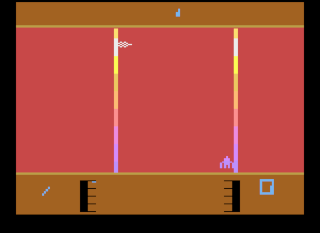 |
| Company: | Twentieth Century Fox |
|
|
Model #:
|
11008 | |
|
Programmer:
|
David Lubar |
|
| Year: | 1982 | |
|
Released?
|
Yes
|
|
|
Notes:
|
Based on the
1966 movie |
Based on the 1966 movie of the same name, Fantastic Voyage is
a vertical scrolling shooter by prolific programmer David
Lubar. David programmed many different games for Sirius
and Twenty Century Fox along with freelancing for other gaming
companies such as Spectravideo and HES. While many TCF
movie based games were released under different names on other
systems (giving the idea that they were actually previously
existing games with a movie title tacked on), this was
apparently not the case with Fantastic Voyage. According
to David "Fox wanted us to write games that could be marked with
movie titles from their library. When I saw the available list,
I leaped on this one. I grew up reading Asimov's books, and I
knew the movie.". Fantastic Voyage is also one of the few
movie based games to be released under the same name on other
systems (the Atari 8-bit computers in this case).
Oddly the Apple II port was renamed Plasmania, most likely
because Sirius released it themselves (TCF did not publish games
for the Apple) and they couldn't or didn't want bother obtaining
the movie license.
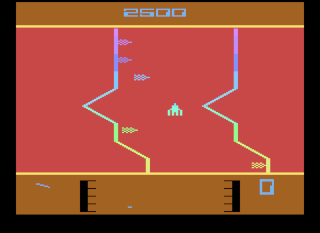
The premise behind Fantastic Voyage is that you are piloting a submarine that has been shrunk down and injected into a patients bloodstream. You must travel through several different parts of the patients body to reach and destroy a life threatening blood clot. There are six areas (or phases) in each level which you must complete before reaching the blood clot. Not all the phases appear on the first few levels which adds to the replay value. Phase 3 doesn't appear until the second level and phase 4 doesn't appear until the third. Different enemies show up in different phases, and some are more deadly than others.
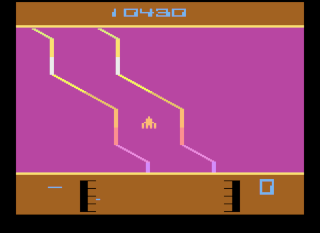
Being a living organism, the patient's body is full of various objects. These objects can be good or bad, so simply blasting everything in sight isn't a viable option unless you want to flatline your patient in a hurry. First up are Defense Cells which are rocket shaped enemies that show up on phases 1, 4, and 5. Defense cells are only a hazard to the player, not the patient so only blast them if they're in your way. Next we have Bacteria which show up on phase 3. Bacteria are tough customers which must be shot three times to completely destroy them. Any Bacteria which are allowed to get past the player will damage the patient. Rounding out the mix are Antibodies which are small little 'bullet' shaped enemies that only appear if you run into the sides of the screen (don't do this as it hurts the patient) and will damage the patient if they hit the other side of the screen.
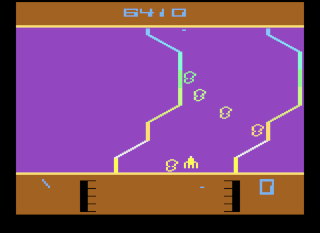
In the final phase you will begin to run into Clotlets which are for some reason indestructible and must be avoided rather than shot. When you final do reach the Blood Clot it must be shot 15 times before it is destroyed. Failing to destroy the Blood Clot (or running into it) is an automatic game over. In addition to all the body defenses trying to destroy you, there exist a few friendly faces. Enzymes (which look like an odd key) periodically fly across the screen and will restore some of the patients health when shot. Shooting all the enzymes you see is the secret to surviving at the higher levels. Another friendly object are blood cells which show up on phases 2 and 4. Blood Cells won't help the player but should not be shot or they will cause damage to the patient.
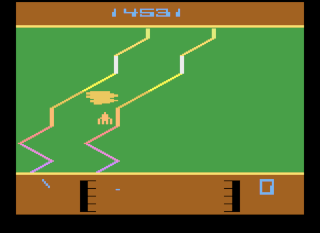
At the bottom of the screen are the heart monitor and the time clock. The heart monitor shows the current status of the patient (the faster the heartbeat the worse condition the patient is in), while the clock acts as a game timer. Each time the minute hand moves around the clock the patient's condition deteriorates. This prevents the player from take a slow leisurely route through each level. The better shape the patient is in when you destroy the blood clot, the more bonus points you will receive. The number in the bottom right of the screen indicates how many patients you have saved (e.g. How many levels you've completed).
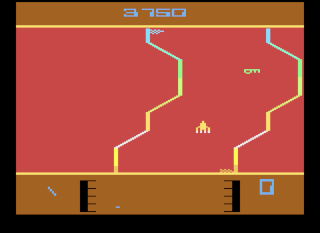
Fantastic Voyage is full of nice little touches that make an average game a lot more interesting. The game has a pause feature (trigged with the Color switch) which has the side effect of causing the screen to flash crazy colors (I thought I broke my cart the first time this happened). In addition to the standard easy/normal/hard difficulty options there are also 'extended' options which make each of the game sections longer which is an unusual feature. The game also starts out with a long playing demo showing the player what to do which is a nice touch, especially in the modern era when the game manual is most likely long gone.
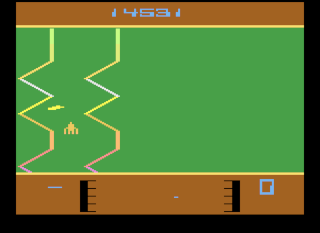
Fantastic Voyage is a competent little shooter and was probably good fun at the time it was released. However, like many 2600 games of the time, if you didn't have the manual you wouldn't have guessed that the game takes place in a human body as the walls are oddly jagged and most of the enemies are somewhat abstract (although how does one draw a convincing looking enzyme using the 2600's limited graphics capabilities?). While these graphics are serviceable on the 2600, Fantastic Voyage was also released on the Atari 8-bit computer line with almost exactly the graphics! This must have been a let down for those 8-bit users hoping for more than a straight 2600 port.
| Version | Cart Text | Description |
| 11/4/81 | Caverns 11-4 | Minor color changes |
| ?/??/81 | Fantastic Voyage | Final Version |
